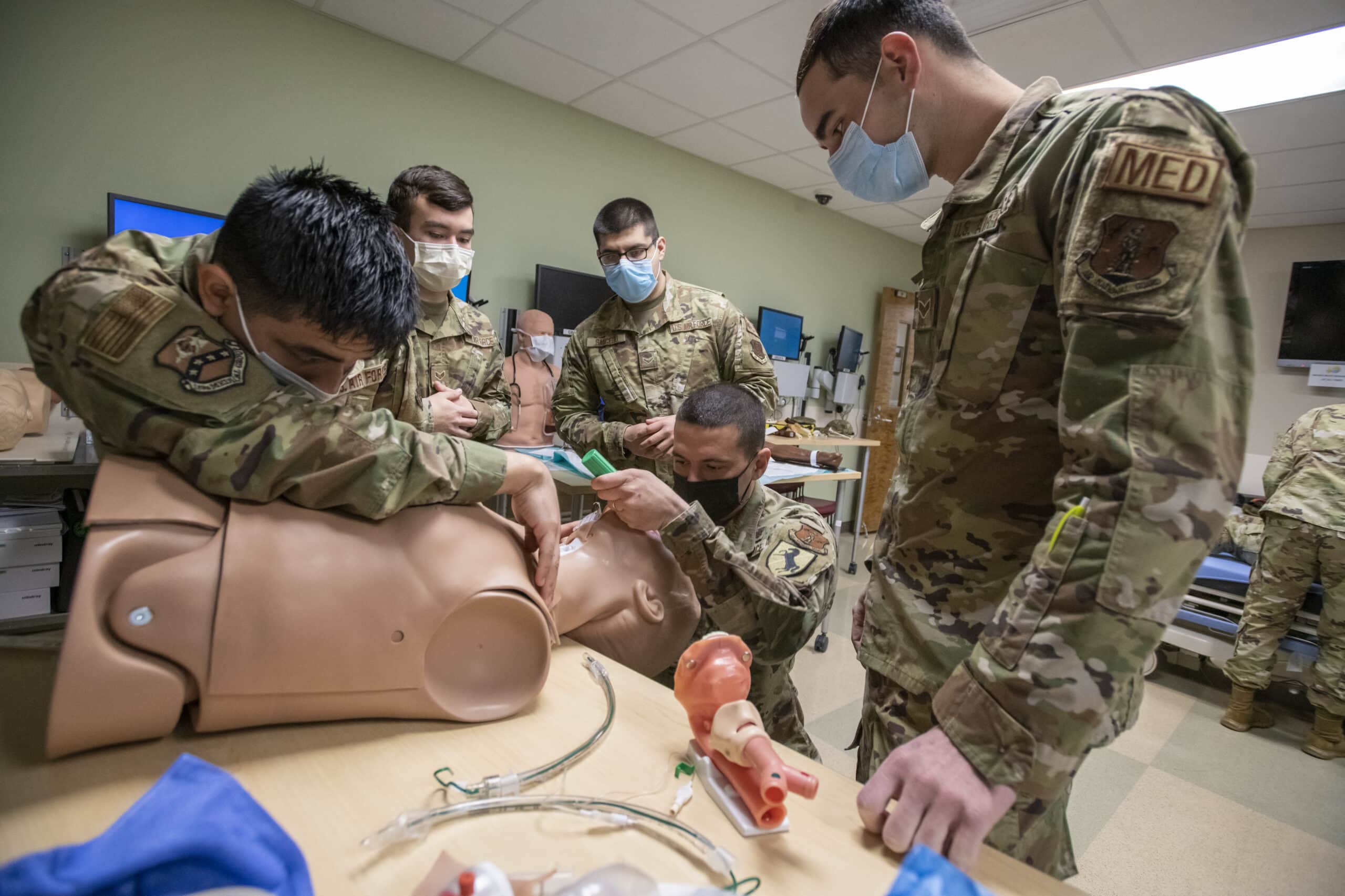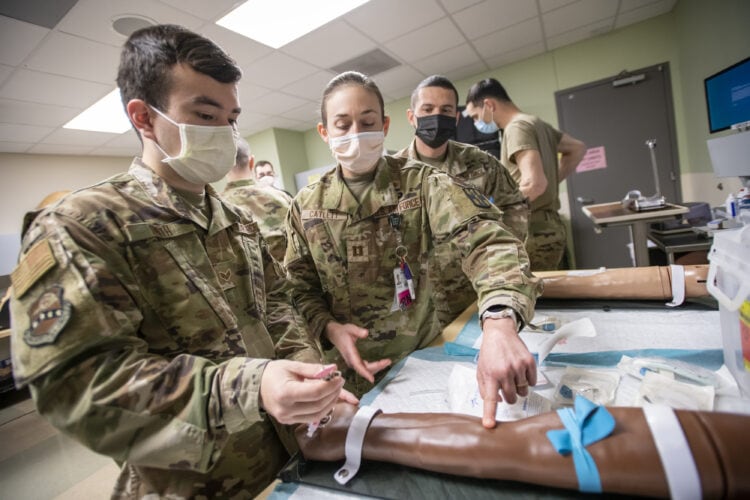View Larger Image

Members of the 189th Medical Group train in trauma care with manikin in the UAMS Simulation Center.
Image by Bryan Clifton
UAMS Simulation Center Helps Train Air Force Medics
| U.S. National Guard personnel provided support to UAMS during nearly every phase of the COVID-19 pandemic, and on March 11 the university Simulation Education Center reciprocated.
More than a dozen members of the Air Force National Guard’s 189th Airlift Wing’s Medical Group, stationed at the Little Rock Air Force Base, received hands-on training through roleplaying with manikins and standardized patients.

Air Force National Guard Capt. Candice Catlett instructs a medic in an aspect of trauma care. Catlett also works as a nurse in the UAMS Emergency Department.Image by Bryan Clifton
“I think simulation training is extremely beneficial,” said Capt. Candice Catlett, BSN. “One of the main reasons I wanted to set something up like this is because of personal experience. When I was deployed, the medics with me had very little hands-on experience with patients.”
Catlett served in Iraq in 2019. She is a nurse in the UAMS Emergency Department in addition to being an Air Force National Guard captain in the Airlift Wing’s Medical Group.
“I didn’t want the same thing to happen to these medics,” she said. “We are trying to make it as realistic as possible. It is imperative to give real-life scenarios so they can learn how to critically think, making do with the equipment they have been given.”
The center serves the medical center staff and students in the five colleges and Graduate School, providing a realistic, stimulating environment for active learning. Real scrub sinks, compressed medical gases (air), wall suction, overhead lamps, along with simulated trauma bays, operating rooms, patient rooms and recovery areas enhance realism. The authentic clinical feel enables learners to suspend disbelief and immerse themselves in scenarios.
One scenario explored by the members of the medical group involved a 31-year-old who was injured by an Improvised Explosive Device (IED) and lost an arm and a leg. The simulation called on the medics to recognize the bleeding, use a tourniquet, check vital signs, establish intravenous treatment and resuscitate and stabilize the patient.

Air Force National Guard medics train in the UAMS Simulation Center.Bryan Clifton
“This has been one of the best sim lab experiences I have had, and I have been in the military 19 years getting and trying to give trauma training,” said Master Stg. Paul Dobbs, MSN. “There’s no substitute for putting your hands on the equipment, being presented with a situation and having to manage that equipment under stress.”
An Alma resident, Dobbs also works in the Fort Smith Veterans Affairs Clinic. He said the Medical Group has had some simulation training before, but not at the same “high fidelity” as what the UAMS Simulation Center can provide.
“This simulation would not have been able to happen without the incredible team that worked with me. A special thank you to Margaret Glasgow, Sherry Johnson, and Patti Griffey,” Catlett said.
At the center, Glasgow is the Director of Education Technology, Johnson is Healthcare Simulation Educator and Griffey is Education Coordinator.
Dobbs said they recently acquired some simulation equipment of their own, so the training also is giving them a good feel for how they want to set up their own simulation lab.
“Equipment, supplies and facilities are a huge need for us,” Dobbs said. “We have facilities for screening people for health conditions, but we don’t have a trauma bay, wall oxygen, wall suction, chest tubes. Having UAMS here is giving us the opportunity to use the sim lab and give our medics something we couldn’t give them at our home station.”